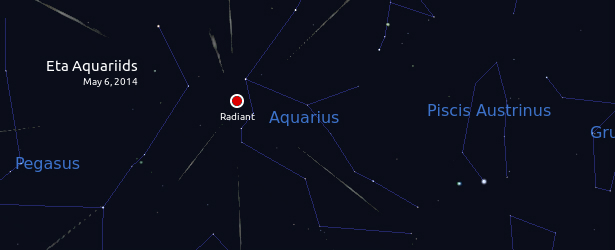Earth entering a stream of debris from Halley’s Comet – Eta Aquarid meteor shower

Eta Aquarid meteor shower is visible from about April 19th to about May 28th each year but unlike most meteor showers Eta Aquarids don't have a sharp peak, meaning you can watch them for several days from May 4 – 7.
It is considered that the best time to observe them is during dark hours before sunrise on May 6, no matter where you live. They will radiate from the constellation Aquarius, two degrees southwest of the fourth magnitude star Gamma Aquarii.
This is an above average shower capable of producing up to 60 meteors per hour at its peak but most of the activity is seen in the southern hemisphere.
In northern hemisphere, the rate can reach about 30 meteors per hour and the radiant of the shower is only above the horizon for the few hours before dawn. However, early-rising observers are often rewarded with rates that climb as the radiant rises before sunrise.
The best place to look to see as many meteors as possible is not at the radiant itself, but at any dark patch of sky which is around 90° away from it, since it is at a distance of around 90° from the radiant that meteors will typically appear at their brightest.
The Eta Aquarids are one of the two meteor showers associated with Halley’s Comet. The Earth passes for a second time through Halley's path around the Sun in October. This creates the Orionid meteor shower, which peaks around October 20.
Featured image: Stellarium. Edit: The Watchers

Commenting rules and guidelines
We value the thoughts and opinions of our readers and welcome healthy discussions on our website. In order to maintain a respectful and positive community, we ask that all commenters follow these rules.